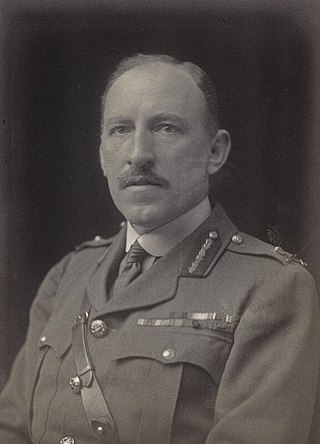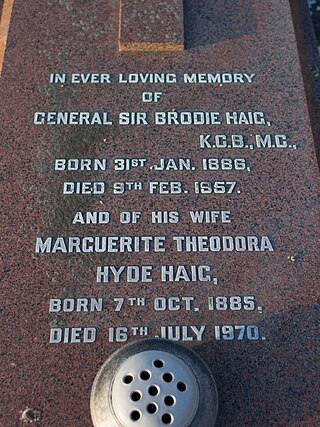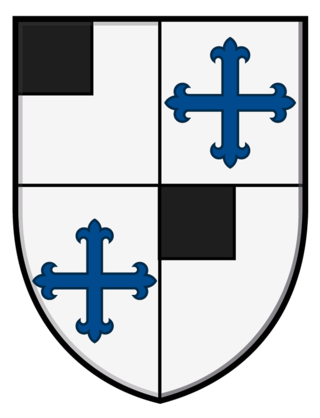
Major-General Alexander Cambridge, 1st Earl of Athlone, was a member of the extended British royal family and a British Army commander, who served as Governor-General of the Union of South Africa and Governor General of Canada.

Field Marshal William Riddell Birdwood, 1st Baron Birdwood, was a British Army officer. He saw active service in the Second Boer War on the staff of Lord Kitchener. He saw action again in the First World War as commander of the Australian and New Zealand Army Corps during the Gallipoli Campaign in 1915, leading the landings on the peninsula and then the evacuation later in the year, before becoming commander-in-chief of the Fifth Army on the Western Front during the closing stages of the war. He went on to be general officer commanding the Northern Army in India in 1920 and Commander-in-Chief, India, in 1925.

Admiral of the Fleet Alfred Ernle Montacute Chatfield, 1st Baron Chatfield, was a Royal Navy officer. During the First World War he was present as Sir David Beatty's Flag-Captain at the Battle of Heligoland Bight in August 1914, at the Battle of Dogger Bank in January 1915 and at the Battle of Jutland in May 1916. After the war he became Commander-in-Chief, Atlantic Fleet and then Commander-in-Chief, Mediterranean Fleet before serving as First Sea Lord in the mid-1930s in which role he won arguments that the Royal Navy should have 70 cruisers rather than the 50 cruisers that had been agreed at the Naval Conference of 1930, that the battleship still had an important role to play despite the development of the bomber and that the Fleet Air Arm should be part of the Royal Navy rather than the Royal Air Force. He subsequently served as Minister for Coordination of Defence in the early years of the Second World War.

The Royal Archives, also known as the King's or Queen's Archives, is a division of The Royal Household of the Sovereign of the United Kingdom. It is operationally under the control of the Keeper of the Royal Archives, who is customarily the Private Secretary to the Sovereign. Although sovereigns have kept records for centuries, the Royal Archives was formally established as recently as 1912 and occupies part of the Round Tower of Windsor Castle. Since the Royal Archives are privately owned, requests for public access must be approved based on the needs and qualifications of the researcher.
Charles Alexander Bannerman Carnegie, 11th Earl of Southesk, styled The Honourable Charles Carnegie before 1905 and Lord Carnegie between 1905 and 1941, was the husband of Princess Maud, a granddaughter of King Edward VII.

Field Marshal Sir Cyril John Deverell was a British Army officer who served as Chief of the Imperial General Staff (CIGS), the professional head of the British Army, from 1936 to 1937. Prior to his becoming CIGS, he fought in the Fourth Anglo-Ashanti War and the First World War, during which he commanded at battalion, brigade and division level, and later advised the British government on the importance of maintaining the capability to mount an Expeditionary Force for operations on mainland Europe in the years leading up to the Second World War.
Groom of the Chamber was a position in the Household of the monarch in early modern England. Other Ancien Régime royal establishments in Europe had comparable officers, often with similar titles. In France, the Duchy of Burgundy, and in England while French was still the language of the court, the title was varlet or valet de chambre. In German, Danish and Russian the term was "Kammerjunker" and in Swedish the similar "Kammarjunkare".
Major Sir John Arnold Wallinger was a British Indian intelligence officer who led the Indian Political Intelligence Office from 1909 to 1916. As a colonial policeman and counter-intelligence officer he became a specialist in countering those opposed to British rule in India, operating both in India and in England.

Sir Henry Frederick Stephenson was a Royal Navy officer, courtier, and Arctic explorer.

General Sir Arthur Brodie Haig, was a senior officer in the British Indian Army. A pre-war regular officer, he served in India prior to the outbreak of the First World War when he was posted to the Middle East. He was wounded at the Battle of Shaiba, twice mentioned in despatches and awarded the Military Cross (MC), before he was taken prisoner by the Ottoman Empire at the Siege of Kut. Escaping captivity in August 1918, he received a Bar to his MC.
Admiral Sir John Reginald Thomas Fullerton, was a Royal Navy officer and courtier.
Brigadier Julian St. Clair Holbrook was a British Army officer.
Major-General Bruce Morland Skinner, was a British Army officer and surgeon who served as Surgeon-General during the First World War.
Squadron Leader Cecil Thomas Nixon Moore was a Royal Air Force officer.

Major–General Hugh Clement Sutton was a General in the British Army, Deputy Assistant Director of Railways in South Africa between 1900 and 1902 and Lieutenant-Governor and Secretary of Royal Chelsea Hospital between 1923 and 1928.
The chief justice of the Leeward Islands headed the Supreme Court of the Leeward Islands.
Colonel Sir George Murray Home Stirling, 9th Baronet CBE DSO was a Scottish British Army officer who was Lord Lieutenant of Stirlingshire from 1936 until 1949.

Lieutenant-Colonel Rowland Edward Power was in Command of the 1st Battalion of the South Nigeria Regiment between 1905 and 1906, the 2nd Battalion of the Buffs during World War I, the 1st Battalion of the Buffs at the end of World War I, and from 1923 until his retirement in 1927, the 1st Battalion of the Buffs in Gibraltar.









